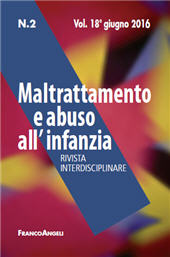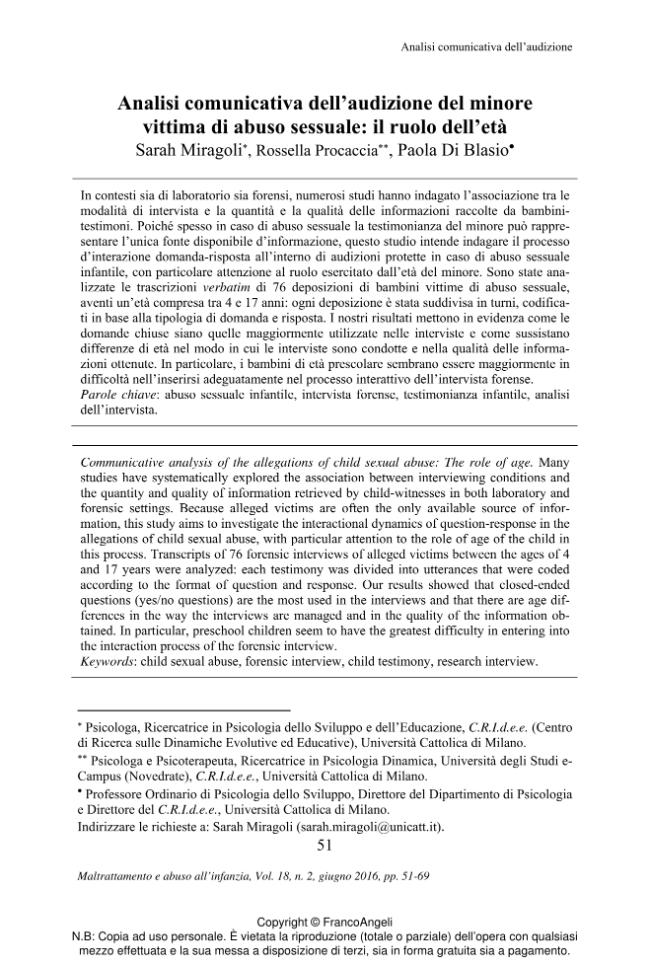Analisi comunicativa dell'audizione del minore vittima di abuso sessuale : il ruolo dell'età
51-69 p.
In contesti sia di laboratorio sia forensi, numerosi studi hanno indagato l'associazione tra le modalità di intervista e la quantità e la qualità delle informazioni raccolte da bambini-testimoni. Poiché spesso in caso di abuso sessuale la testimonianza del minore può rappresentare l'unica fonte disponibile d'informazione, questo studio intende indagare il processo d'interazione domanda-risposta all'interno di audizioni protette in caso di abuso sessuale infantile, con particolare attenzione al ruolo esercitato dall'età del minore. Sono state analizzate le trascrizioni verbatim di 76 deposizioni di bambini vittime di abuso sessuale, aventi un'età compresa tra 4 e 17 anni: ogni deposizione è stata suddivisa in turni, codificati in base alla tipologia di domanda e risposta. I nostri risultati mettono in evidenza come le domande chiuse siano quelle maggiormente utilizzate nelle interviste e come sussistano differenze di età nel modo in cui le interviste sono condotte e nella qualità delle informazioni ottenute. I
n particolare, i bambini di età prescolare sembrano essere maggiormente in difficoltà nell'inserirsi adeguatamente nel processo interattivo dell'intervista forense.
Many studies have systematically explored the association between interviewing conditions and the quantity and quality of information retrieved by child-witnesses in both laboratory and forensic settings. Because alleged victims are often the only available source of information, this study aims to investigate the interactional dynamics of question-response in the allegations of child sexual abuse, with particular attention to the role of age of the child in this process. Transcripts of 76 forensic interviews of alleged victims between the ages of 4 and 17 years were analyzed: each testimony was divided into utterances that were coded according to the format of question and response. Our results showed that closed-ended questions (yes/no questions) are the most used in the interviews and that there are age differences in the way the interviews are managed and in the quality of the information obtained. In particular, preschool children seem to have the greatest difficulty in entering into the interaction proc
ess of the forensic interview.
-
Articles from the same issue (available individually)
-
Information
ISSN: 1972-5140
DISCIPLINES
KEYWORDS
- Abuso sessuale infantile, intervista forense, testimonianza infantile, analisi dell'intervista
- Child sexual abuse, forensic interview, child testimony, research interview



